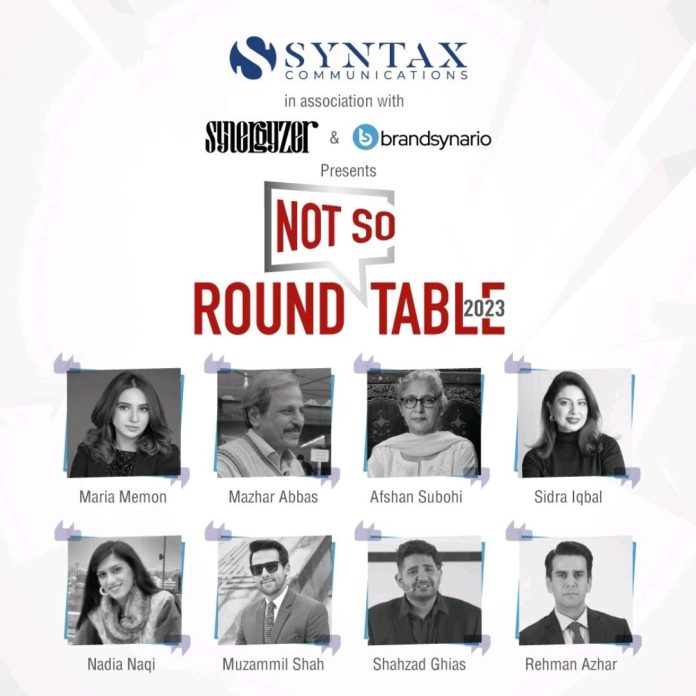Political branding encompasses the deliberate and strategic efforts of political leaders to create a unique and recognizable identity for themselves or their parties. It involves shaping public perception, establishing a strong and memorable image, and effectively communicating key messages to the electorate. In Pakistan, where politics is fiercely competitive and diverse, political branding has become increasingly vital for parties and leaders to distinguish themselves in a highly polarized landscape.
Narrative building and influencing public opinion are integral aspects of political branding, focusing on constructing a compelling and persuasive story that resonates with the aspirations, causes, needs, and concerns of the electorate. This involves framing political agendas, policies, and actions in a manner that aligns with the values and aspirations of the target audience. Successful narrative building enables politicians to cultivate a loyal and engaged support base while shaping public discourse on critical issues.
MAZHAR ABBAS – Journalist, Geo & Jang
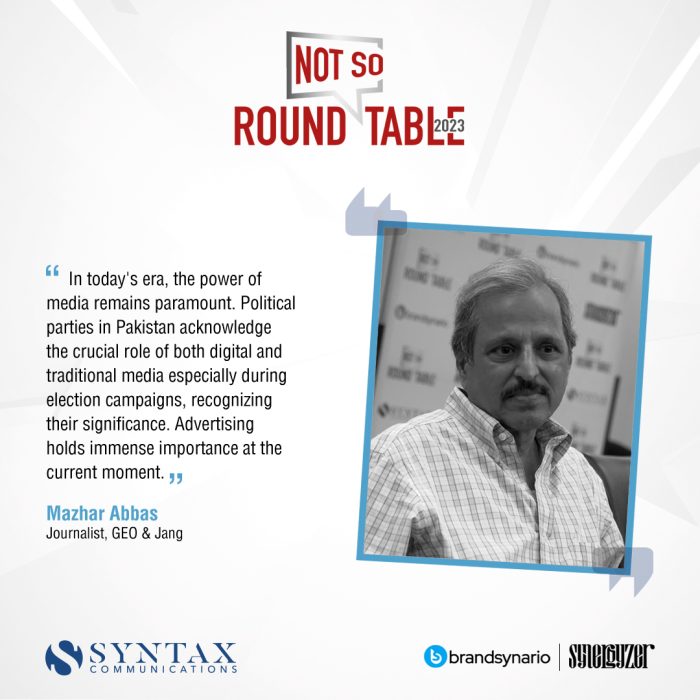
Mazhar Abbas provided a historical overview of political campaigning in Pakistan, highlighting the association of advertising agencies with event management and campaigns. Despite challenges, effective campaigns have shaped media consumption, with media houses selling airtime to campaigns since 2013. Information ministers’ talks dominate uninterrupted channels. While digital media disrupted traditional participation in rallies, social media now empowers civilians to shape their own narratives. Media power remains relevant despite social media, as evidenced by the advance booking of front and back pages in print media. However, violations of content and commercial guidelines under the PEMRA law are widespread.
AFSHAN SUBOHI – Journalist, Former Dawn Newspaper
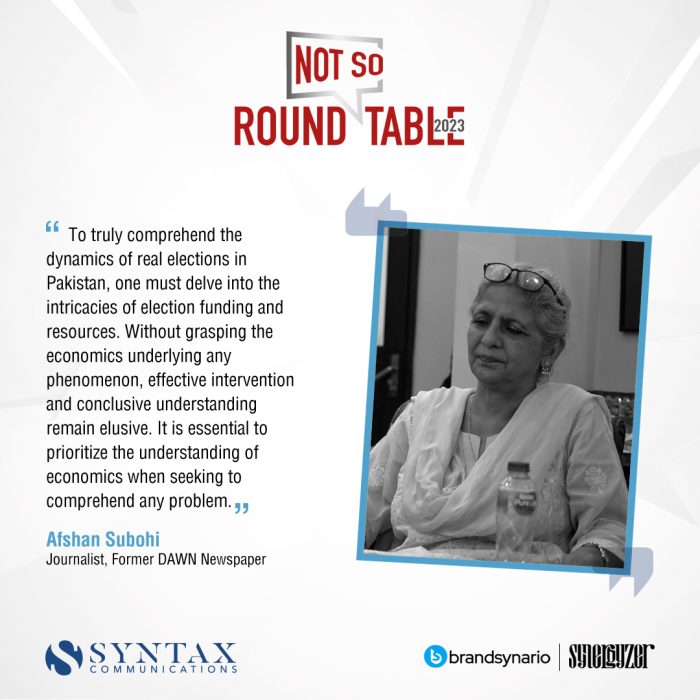
In terms of the rule of law, the guidelines are well-defined, but in practice, there are deviations from theory in various aspects. Following the money trail is challenging, as election campaigning heavily relies on cash transactions. The prescribed limits by PILDAT and FAFEN are rarely exhausted, with inflated expenses for decorations, media houses, advertising, aircraft, and car rentals. This inflationary trend even impacts the real estate market prior to elections due to the need for readily available cash. The connection between finance, economics, and the entire election cycle remains under-reported. The absence of accountable independent media in Pakistan creates a significant gap in free, unbiased journalism. To intervene and enhance the system, it is crucial to comprehend the financial and economic dynamics of elections, including the sources and utilization of funds.
MARIA MEMON – Journalist, ARY News
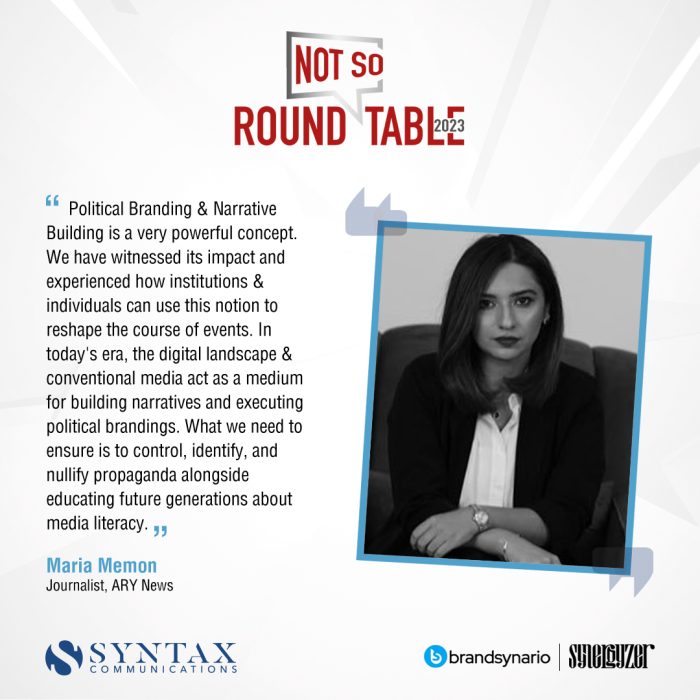
It is crucial to acknowledge the prevailing issue at hand. In Pakistan, there exists a single branding company that holds the authority to dictate what is right or wrong for the country, acting as both a traitor and a patriot, shaping the narrative of Pakistan as a security state for the past 75 years. Other political actors simply echo these dictated narratives, perpetuating the concept. National-level branding inevitably trickles down, affecting all aspects of society.
While it may have been an intriguing chaos during the nation-building process, after 75 years, this orchestrated drama has reached its full intensity. It is both disruptive and fascinating. Many analysts now adopt a passive approach, following a set pattern established over the last two decades. However, this pattern is finally being disrupted. Is
it the influence of the 60% population under the age of 35 that is asserting itself? They are pushing back, and the sentiment in Punjab is concerning. The struggles faced by the Pakhtuns and Balochistan are now widely known. This has propelled Pakistan into a significant rebranding crisis. If resorting to greater power is seen as a solution, then the narrative war has already been lost. Predicting the outcome is challenging as Pakistan ventures into uncharted territory. There is no manual to follow. It is a free-fall situation.
REHMAN AZHAR – Journalist, ExpressTV
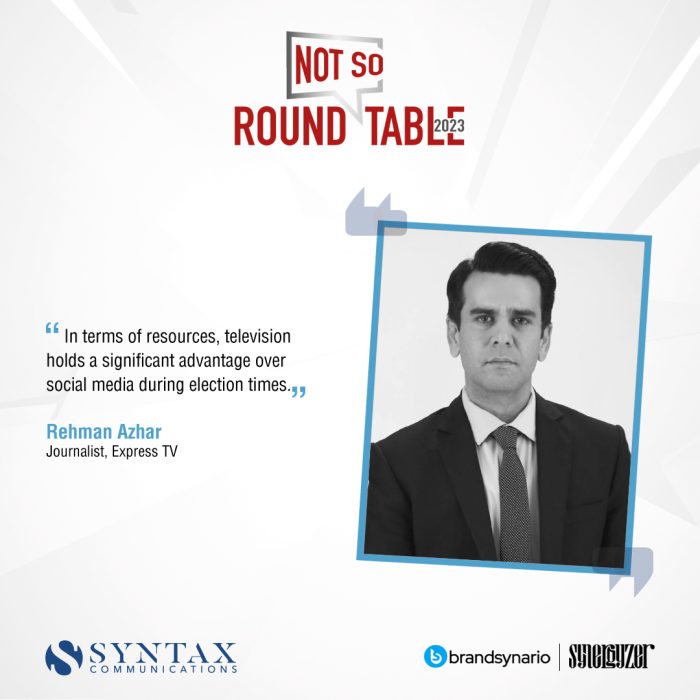
As a member of the broadcast media generation, I have witnessed rapid and transformative changes in the media landscape over the past decade. Previously, print media would discuss the “issue of the month,” but now we see issues changing within hours. What will be the focal point of the next elections? Based on my coverage of Indian and American elections, it’s impossible to predict the election climate in advance. Previously aligned forces have now scattered, leading to unpredictable dynamics. The upcoming election is expected to be extremely chaotic, unlike the fairly systematic elections of 2013 and 2018.
SYED MUZAMMIL SHAH – Journalist, BOL News
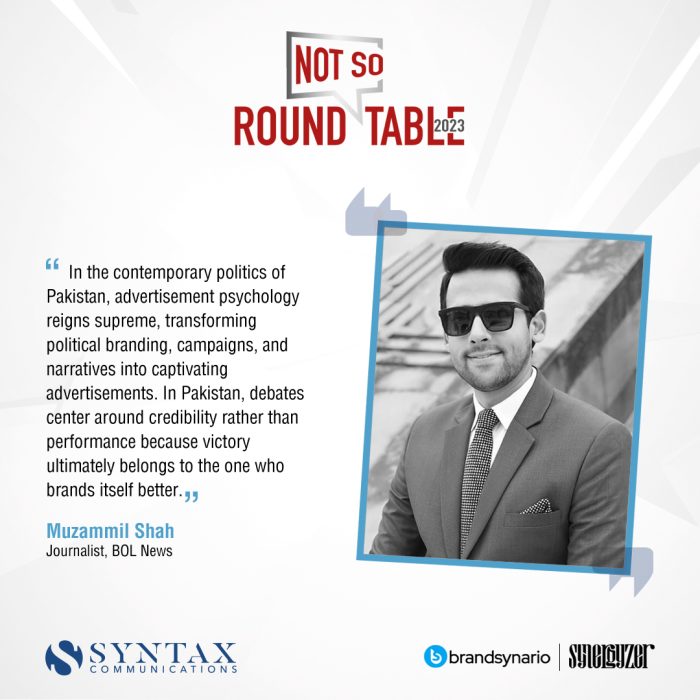
Political branding in Pakistan lacks organization and clarity. Unlike international campaigns with distinct ideological differences, Pakistan struggles to define liberal, central left, or central right positions due to parties sharing similar narratives. The focus has shifted from objective truth and performance to maintaining credibility on screen, primarily through biased electronic and social media. Successful candidates are those who brand themselves effectively within limited time slots, prioritizing entertainment over information. This phenomenon is exemplified by PTI’s holistic approach, incorporating religious and patriotic elements to appeal to both religious voters and the elite youth. The popularity of such parties has overshadowed the branding efforts of the Establishment, making truth irrelevant. Ultimately, Imran Khan’s credibility prevails in this race.
NADIA NAQI – Journalist, Dawn TV
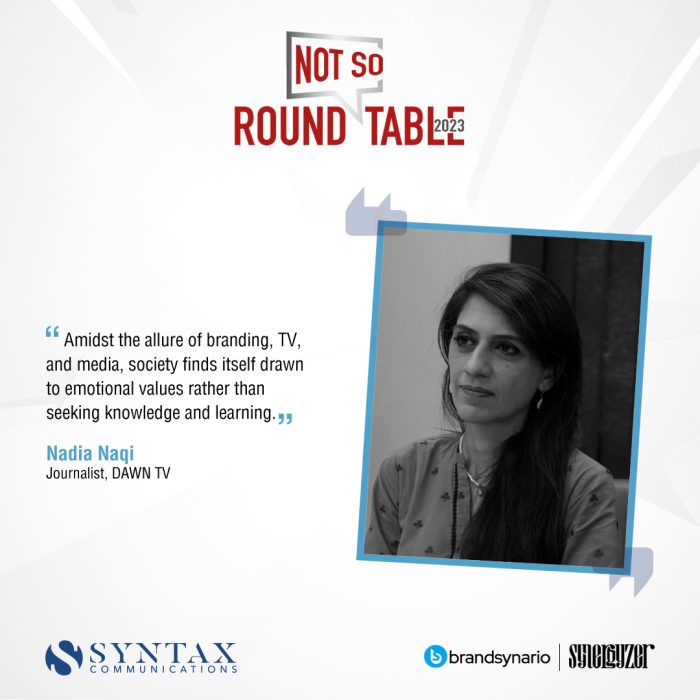
It’s no longer just about how leaders present themselves; the audience is discerning and aware of what they consume. The truthfulness of the narrative is no longer the central concern, as the youth cannot be fooled by emotional messaging and subtle branding. Current affairs shows have become mundane. They fail to educate the masses about the importance of their civic rights and duty to vote. What tangible benefits can a political party offer to justify a citizen’s vote? The key elements of a successful campaign include religious sentiments, anti-American stance, pro-Kashmir stance, anti-India rhetoric, and anti-Establishment messaging. In contrast, international campaigns have clear policy agendas, and the media’s role in shaping political discourse has diminished.
SHEHZAD GHIAS – Host, The Pakistan Experience
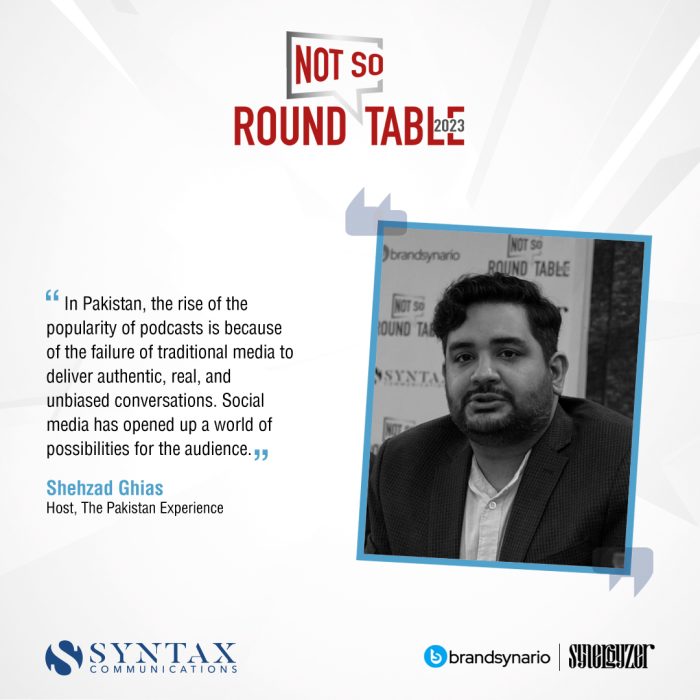
When considering the sentiments of the youth, it becomes crucial to determine who holds the decision-making power: the leader, their surrounding team, or the influential institutions that guide them. At present, the people of Pakistan feel left to their own devices, leading to a lack of trust among the youth. The specific cause being championed may not be the primary concern. What truly matters is whether it aligns with good economics, regardless of who takes the lead in advancing it.
SIDRA IQBAL – journalist, Aaj TV
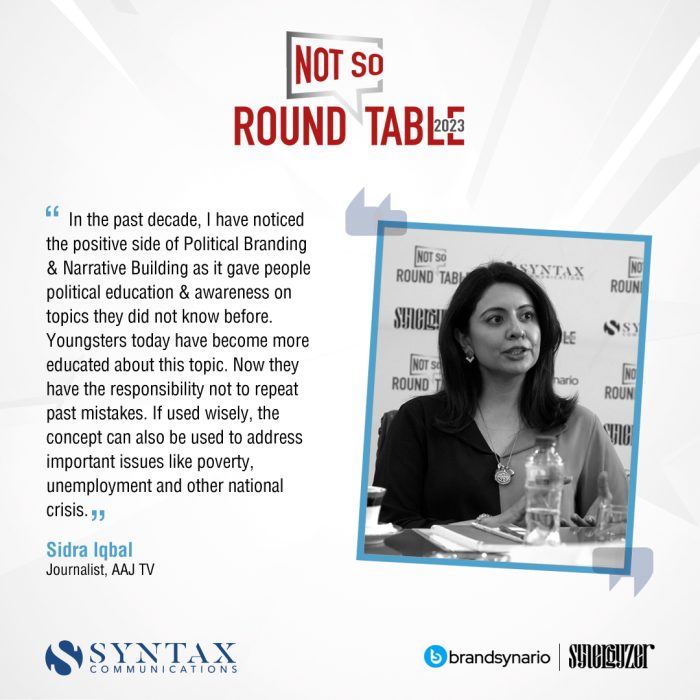
The realm of Pakistani politics has heavily relied on knitting narratives for a specific political personality. So that the public can accept them as their leaders. It made sure to integrate religious sentiments, national issues, and the interest of the youth of that era to foster a strong narrative that would prevail among the nation for decades. Not to forget that at a certain time, those leaders become falling stars, and new practices of narrative building are carried out for someone else. As for this era, the youth has the eye-opening knowledge to know the difference between what is shown and what is the reality of certain crawling propagandas.

